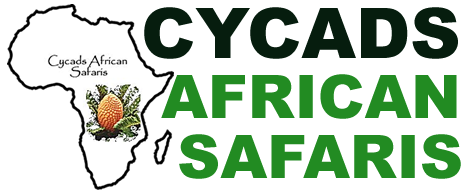The park borders Lake Edward and Lake George which are connected by kazinga channel. Queen Elizabeth national park has over a 100 mammal species and close to 600 bird species, Queen Elizabeth National park, in the south western part of Uganda, is a diverse nature eco system with abundant wildlife and is one of the premier tourist attractions in Uganda.
The vegetation varies from savanah plains to dense, equitorial forests and swamps. The park is also home to Lake Edward and several rivers and tributaries.
Brief History of the Queen Elizabeth National Park
It is located in the far south-west of the country where Uganda, Rwanda and DRC (Congo) meet. Getting to Bwindi is an adventure in itself as you have to cross much of Uganda by road to get there. Permits are limited to 12 per day, many of which are purchased by tour operators. In the jungles of Bwindi Impenetrable Forest live half the world’s population of highly endangered Mountain Gorillas.Visiting them is one of the most emotional wildlife encounters you will ever experience.
This pocket of huge primeval forest in the Virunga Mountain range is one of the most biologically diverse areas on earth. It has an eco-system that defines the very essence of the continent and has therefore been designated as a World Heritage Site. The forest floor is damp and laden with leaf mould, matted vegetation and fallen vines, which serve to trip you up as you clamber up and down the slippery slopes in search of a glimpse of the elusive gorillas.
Visitor activities in the park
Beautiful View of the National Park Species. Queen Elizabeth records a large number of animals, including 95 mammal species (among them elephants, lions, leopards, Uganda kobs, buffaloes, jackals, spotted hyenas) and 10 primate species, like chimpanzees, vervet monkeys, blue monkeys, red tailed monkeys, black and white colobus, olive baboons. The list of birds is of 606 species recorded, possibly the highest in any African National Park and in the world.
Launch trip from Mweya along Kazinga Channel for a wonderful wildlife experience: expect to see hippos, crocodiles, buffaloes, elephants, bushbucks, warthog and many water birds species. Game drives in Kasenyi Plans (Northern Sector) and in Ishasha (Southern sector, searching for the typical lions climbing the fig’s trees).
“Chimpanzee tracking” in Kyambura Gorge
Bird watching and natural walk in Maramagambo Forest. The forest is one of Uganda’s largest tract forest .. It is a medium altitude moist, semi-deciduous forest. Characteristics of such forest are increasingly becoming rare in Africa. It has very spectacular lakes and craters. It is the only place in the park where one could find Blue Lakes. Other features of attraction in the forest include; primates e.g Lhost monkeys, Chimpanzees, bush baby, baboons, vervet monkeys, red-tailed monkeys, etc. Due to its location, Maragambo has a high diversity of butterflies. The bat and the hunters cave are other pleasant experiences that the forest offers, and of course some forest birds.
Where to stay: There is a safari lodge at Mweya and a camping site and the Mweya hostel on known as institute of ecology catering for budget travellers. Jacana lodge is another lodge located on the crater lake of maramagambo forest.
Getting to the park: it is just 438km from Kampala on a good tar road that leads main gate turn-off. From there its 20km on a dirt road.
When to visit the park: The Park can be visited any time throughout the year that is from January to December.
